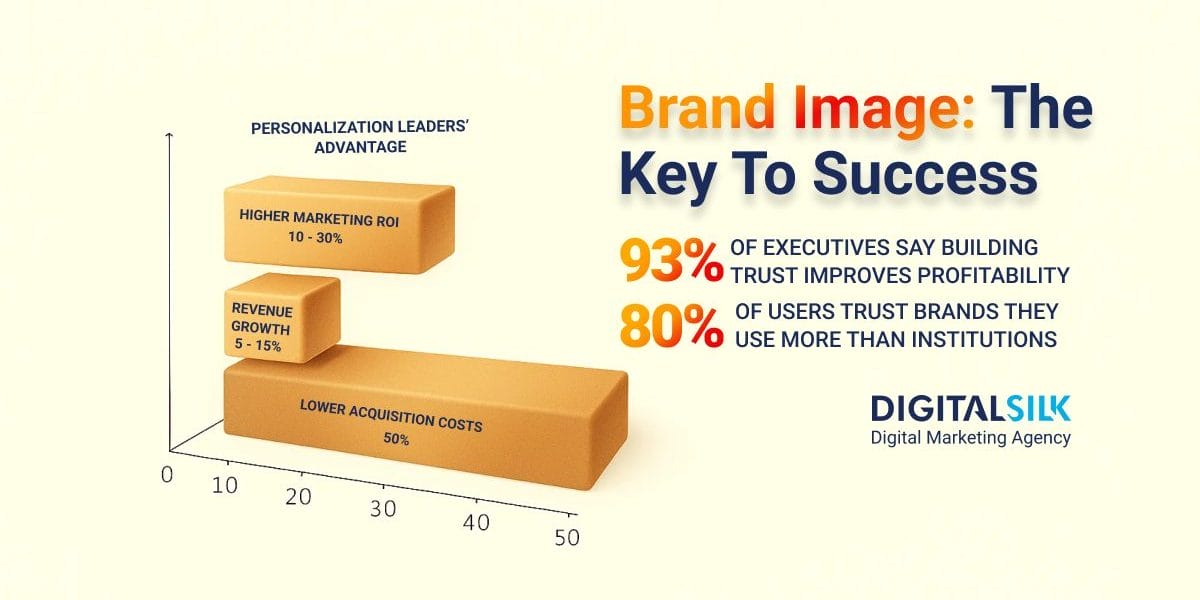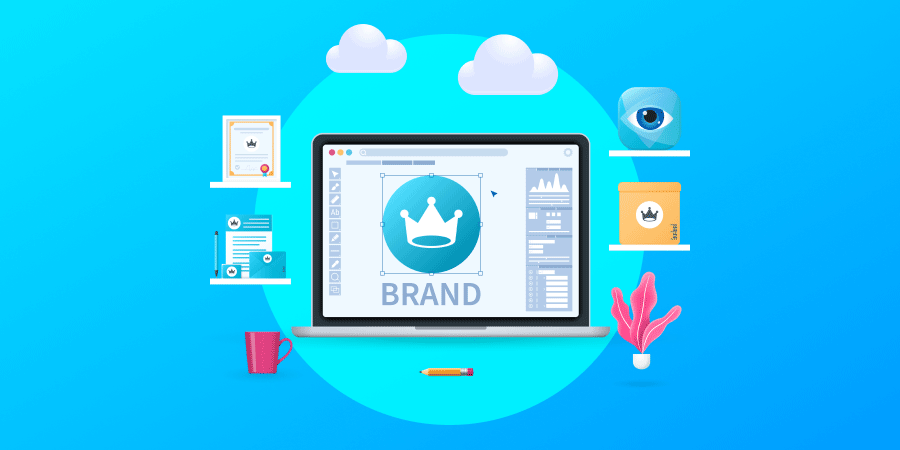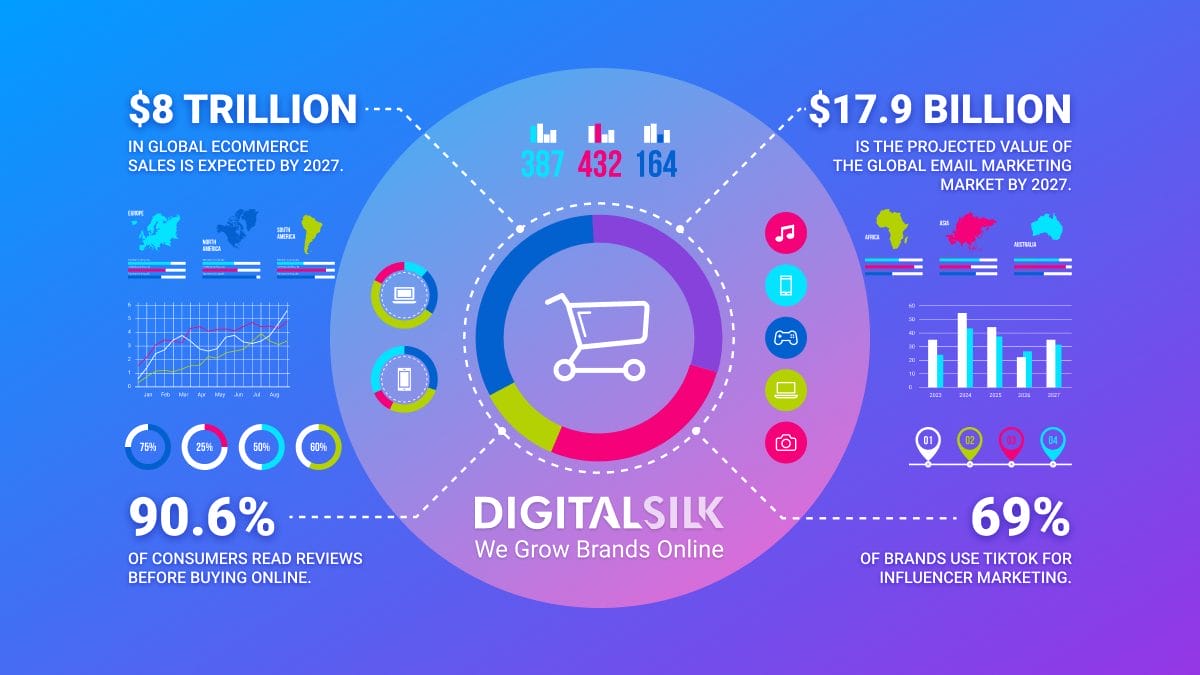Brand Image Key Highlights
-
Trust drives pricing power: 90% of U.S. consumers require brand trust before purchase, influencing decisions and premium willingness.
-
Personalization builds loyalty: Leaders cut acquisition costs by 50% and grow revenue up to 15%, making tailored experiences essential.
-
AI governance protects reputation: Clear tone, voice and value rules ensure AI-generated content preserves trust and brand equity.
In 2025, brand image is crucial for value creation.
About 90% of consumers in the U.S. say it’s important they trust a brand before buying from them. Trust influences not only whether people decide to buy but also how much they are willing to pay.
This means brand image plays a big role in revenue and profit margins.
How you present your brand, the experience ytrou offer your customers and how well you execute your values determine whether you can charge a premium price or need to offer discounts to stay competitive.
Here are the ten reasons why brand image is essential in 2025, each backed by clear logic and real-world examples from successful companies.
10 Reasons A Strong Brand Image Is Your Greatest Asset In 2025
Behind every strong corporation is a brand image that earns trust, drives loyalty and keeps customers coming back no matter how the market shifts.
1. Enterprise Value Grows Over Time
Well-managed brands earn exceptional returns over time because they reduce buyer risk, drive customer preference and enable premium pricing.
The Interbrand’s 2024 Best Global Brands list shows that U.S. brands dominate the top ten.
This highlights how strong brands can create value and remain resilient during different market conditions.
A brand image is a long-term business asset.
And because it’s an asset, executives should track brand-related metrics, for example, how much you can charge without discounts (pricing power) or how often customers buy again (repeat rate), alongside traditional financial measures like revenue, profit margin and cash flow.
McKinsey’s 2025 perspective on customer-centric growth reinforces that teams that align around customer value and the brand promise that signals it are better positioned to deliver sustainable margins.
Apple tops Interbrand’s list at $488.9 billion in brand value, which is the result of decades of disciplined innovation, ecosystem control and consistent brand stewardship.
Best practices:
- Include brand equity key performance indicators (KPIs) like pricing power and repeat rate in executive dashboards alongside financial KPIs.
- Measure your brand’s financial value every year using a trusted method, such as Interbrand’s, which looks at financial performance, the role of the brand in purchase decisions and overall brand strength, so you can see whether it’s growing and why.
- Align product, marketing and operations teams around a single brand promise to ensure value compounding.
2. Pricing Power Holds In Tough Markets
In 2025, the ability to set strong prices depends on how valuable customers believe your brand is.
McKinsey notes that in a slower-growth, lower-inflation environment, companies protect margins best when they pair disciplined pricing with clear brand differentiation, making customers feel the product is worth the price.
Meanwhile, their 2025 analysis on AI-scaled personalization shows that when personalization is delivered consistently to large audiences, it not only drives more sales but also encourages customers to spend more. This broad relevance strengthens the perceived value of your brand, so customers are more willing to pay full price instead of waiting for discounts.
If your premium products aren’t selling as well as your basic ones, it’s often a sign that your brand isn’t seen as relevant enough and not necessarily that your prices are too high.
In that case, review every key moment at the point of sale, from product selection and packaging to bundle offers and checkout to identify where you can improve customers’ willingness to pay.
For example, Delta Air Lines regularly reports that revenue from its premium seats outpaces its main cabin.
In investor updates, the company shows how this “premium + loyalty” combination accounts for approximately 57% of revenue in Q3 2024.
On top of that, Delta earns around $2.0 billion per quarter from its partnership with American Express.
This is a clear example of how strong brand perception drives customers to choose higher-priced options, directly translating brand trust into measurable revenue.
Best Practices:
- Audit customer journey moments that shape willingness to pay (assortment, packaging, bundles, checkout)
- Measure how much each customer segment pays at full price versus during discounts (realized price vs. promotional dependency), so you can see where your brand depends too heavily on promotions
- Use AI personalization to increase relevance at scale and reduce discount reliance
3. Conversion Depends On The Experience
Customers judge your brand by how easy and trustworthy it feels to complete a task, such as search, compare, buy and return.
Research from Baymard Institute shows the average large eCommerce site can gain about 35% conversion imply by improving their checkout experience. Many customers abandon unnecessarily complex purchases, which proves that a smooth experience directly translates into revenue.
When the buying process breaks because of a clunky sign-in, a payment glitch or a slow order fulfillment, brand trust takes a hit.
Your checkout isn’t a side mission, but often the make-or-break moment.
Every click, form field and error message shows customers whether you value their time.
The Home Depot backs up its brand promise by investing in real operational upgrades, like modernization and AI-driven tools, so the shopping experience itself consistently proves the brand’s reliability, rather than relying only on advertising to create that perception.
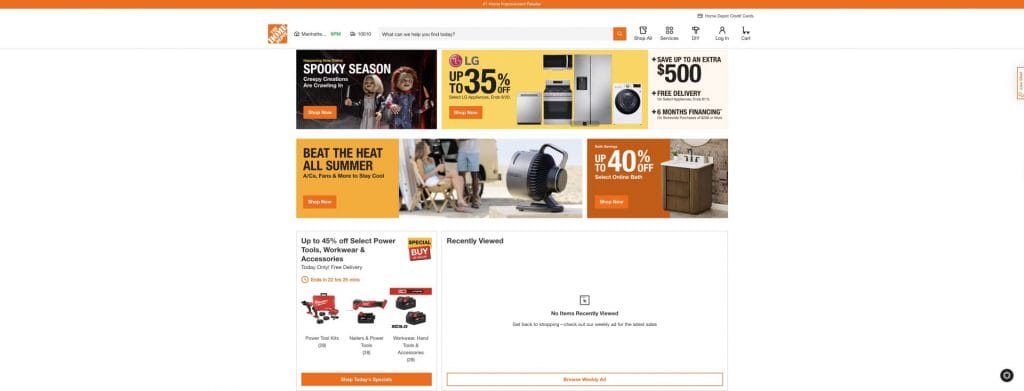
Best Practices:
- Conduct quarterly reviews of user experience, especially in checkout and payment processes
- Set specific timeframes for fixing journey friction points, such as form errors, payment failures or confusing navigation
- Monitor both conversion rates and customer sentiment to demonstrate the impact of improvements
4. Personalization Proves You Deliver
Personalization is now a core driver of brand integrity.
Today’s leaders use generative AI to deliver personalized experiences at a lower cost.
However, the Adobe Digital Trends 2024 report finds that more than half of practitioners struggle with governance.
Specifically, they cite ensuring quality and customer trust in AI-generated content as a top challenge.
This makes protecting and consistently executing a brand’s values, tone and quality standards just as important as the data science powering the AI.
For personalization to strengthen brand equity, it must align with standards for tone, safety, and fairness and not just precision targeting.
A best practice is to establish an AI content and data governance squad that includes brand, legal, product and customer care teams. Publishing your data and model guidelines can also help build transparency and trust.
Starbucks serves as a prime example, embedding governed personalization into its “Back to Starbucks” turnaround to protect brand values and strengthen customer trust.
In Q3 FY2025 the company rolled out a new app, enhanced Mobile Order & Pay, and refreshed its Rewards program to deepen loyalty and engagement.
By Q2 FY2025, Starbucks had approximately 34.2M 90-day active U.S. Rewards members, with Rewards accounting for about 59% of U.S. company-operated spend and Mobile Order & Pay at roughly 31% of U.S. transactions.
Management also noted three consecutive quarters of improved U.S. transaction comp, even as overall U.S. comps were down 2% in Q3, showing how disciplined customer experience and personalization remain central to its rebuild strategy.
Best practices:
- Create a brand and data governance council that includes representatives from brand, legal, product and customer care teams
- Tie personalization success to brand standards, including tone, safety and fairness
- Share your personalization and data-use guidelines publicly to increase customer trust
5. Brand Loyalty Leads To Repeat Business
A strong brand image fosters customer loyalty, which is crucial in 2025.
When consumers trust your brand, they are more likely to return for future purchases.
Loyalty programs are most effective when they’re closely tied to pricing and customer experience, allowing members to feel they’re receiving extra value at every stage of their journey.
This cohesive approach subsequently boosts sales mix and margin resilience.
McKinsey’s research shows that when loyalty programs and pricing strategies are fully integrated and aligned, loyal customers tend to spend more and become more attached to a brand.
Building a loyal customer base helps maintain revenue but also lowers marketing costs, since retaining existing customers is usually cheaper than acquiring new ones.
Take Costco as a prime example.
In FY2024, its membership fee revenue reached $4.83 billion. In Q3 FY 2025, membership fee revenue reached $1.240 billion. Costco also raised membership fees effective September 1, 2024 (Gold Star from $60 to $65; Executive from $120 to $130), affecting approximately 52 million memberships.
Best Practices:
- Design loyalty programs so they work hand-in-hand with pricing strategy, offering a consistent value proposition
- Measure key loyalty metrics such as member share of sales, acquisition cost versus lifetime value and the rate of customers upgrading to premium products or services
- Use data from loyalty members to guide new product development and service improvements
6. Building Trust In Uncertain Times
As people’s distrust toward institutions grows, people see brands as more trustworthy than traditional sources of authority.
According to the 2025 Edelman Trust Barometer Special Report: Brand Trust, From We to Me, 80% of consumers say they trust the brands they use more than they trust business, media, government, NGOs or even their employers.
In times of uncertainty, emotional safety and personal relevance become crucial to building trust, and not some grand statements.
It’s also important to note that neutrality can be dangerous. The same report reveals that 53% of consumers say if a brand ignores a societal issue it’s expected to speak on, it risks losing consumer trust, even assuming complicity. This means silence can be as risky as making a misstep.
Brands must ensure their values are reflected through operational proof. This involves translating commitments into tangible actions concerning products, packaging, supply chain practices and customer service, while simultaneously measuring consumer sentiment alongside sales performance linked to these values.
Patagonia is an excellent example of a brand with decades of consistent alignment between its products, operations, and advocacy. The company shows how trust, built through values-driven everyday experiences, fosters loyalty and pricing power, rather than relying solely on purpose programs.

Best Practices:
- Turn brand values into visible, operational actions in products, packaging, supply chain choices and service interactions
- Track changes in customer sentiment alongside sales growth in categories linked to your values
- Have a clear decision-making framework for when and how to speak out on issues that align with your brand promise
7. The Power Of Credibility In Complex Deals
Transparency is essential to establishing brand credibility.
Consumers today expect clarity around sourcing, ethical practices and decision-making processes.
The 2024 PwC Trust in Business Survey reports that 93% of business executives agree that building and maintaining trust improves profitability, while 94 % identify at least one trust-building challenge, often tied to supply chain and communications gaps.
This is significant because transparent brands reduce doubts, reinforce loyalty and smooth strategic shifts.
When trust is compromized due to challenges like supply chain disruptions or reputation issues, transparency can serve as the crucial mechanism that rebuilds confidence.
Chipotle reinforces its commitment to transparency and integrity through its operational standards detailed in the 2024 Sustainability Report.
The report reveals that all U.S. suppliers are held accountable to the company’s Food with Integrity standards, which require adherence to ethical sourcing, environmental sustainability and labor practices.
The report also notes that in 2024, Chipotle purchased 47 million pounds of produce sourced locally, demonstrating a scalable approach to value-aligned sourcing.
Best Practices:
- Review supply chain transparency regularly and publish progress reports
- Hold suppliers to documented ethical, environmental and labor standards and verify compliance
- Connect transparency goals to investor and stakeholder updates so the link to business performance is clear
8. Consistency Sustains Market Position
In 2025, brand governance is about ensuring that every customer interaction, from in-store signage to AI-generated responses, reflects the brand’s values and tone.
Inconsistent experiences create friction, dilute brand equity and make it harder to command premium pricing.
This is especially relevant as marketing budgets tighten: Gartner’s 2024 CMO Spend and Strategy Survey shows average budgets fell to 7.7% of company revenue, a near-record low since the survey began.
With less room for error, companies need to codify brand execution and audit it relentlessly.
Coca-Cola shows how disciplined brand governance can lead to market relevance over decades. Interbrand valued the brand at $61.2B in 2024, keeping it in the global top 10 for 25 consecutive years.
The brand’s distinctive visual identity, characterized by its iconic red color, Spencerian script and a consistent “refreshment” narrative, remains consistent across all platforms, from Super Bowl ads to vending machine graphics.
Best practices:
- Define unified visual, verbal and experiential guidelines that extend to AI-assisted content creation
- Establish cross-functional KPIs so Marketing, Product and Customer Care teams are incentivized to deliver consistent experiences
- Use brand audits to identify gaps and close them quickly, especially across global markets
9. Crisis Readiness: Preparedness Protects Reputation
A crisis does not necessarily spell doom for a brand. However, an inadequate response can lead to lasting damage.
Edelman’s 2024 Brands & Politics special report finds that a majority of consumers believe a silent brand is “doing nothing or hiding something” and 71% say a brand must take a stand under pressure.
This clarity is essential for maintaining trust.
Johnson & Johnson’s handling of the Tylenol recall remains the go-to case study in crisis response. The brand demonstrated decisive recall, transparent communication and people-first messaging preserved trust and brand integrity.
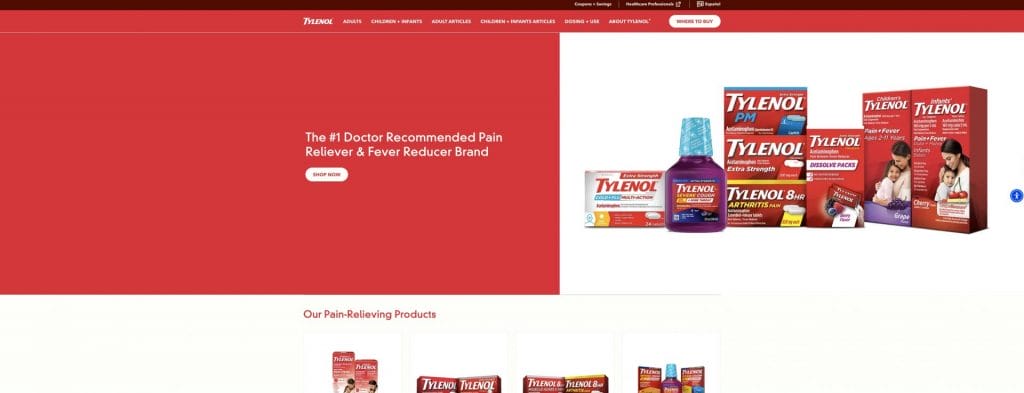
Best Practices:
- Keep a crisis response plan that outlines principles, responsibilities and ready-to-use messaging
- Run crisis simulations with multiple departments at least twice a year
- Track response speed, clarity and consistency as part of your brand health monitoring
10. Strong Brands Supercharge Performance Marketing
Brand equity is like a financial defensive barrier, protecting pricing power and customer trust.
Companies that chase short-term wins at the expense of brand building may get quick results but risk undermining trust and their ability to set prices in the future.
Analytic Partners has found that brand marketing outperforms performance marketing 80% of the time, and it also boosts the effectiveness of performance campaigns when both are integrated.
This underscores the importance of maintaining a balanced approach: focusing too heavily on performance can dilute the brand, while exclusively concentrating on branding risks depleting the sales pipeline.
Nike nails this balance.
Its iconic “Just Do It” message keeps brand relevance high, while investments in digital marketing, personalization, and direct-to-consumer strategies drive strong performance outcomes, demonstrating how robust brand equity can empower execution.
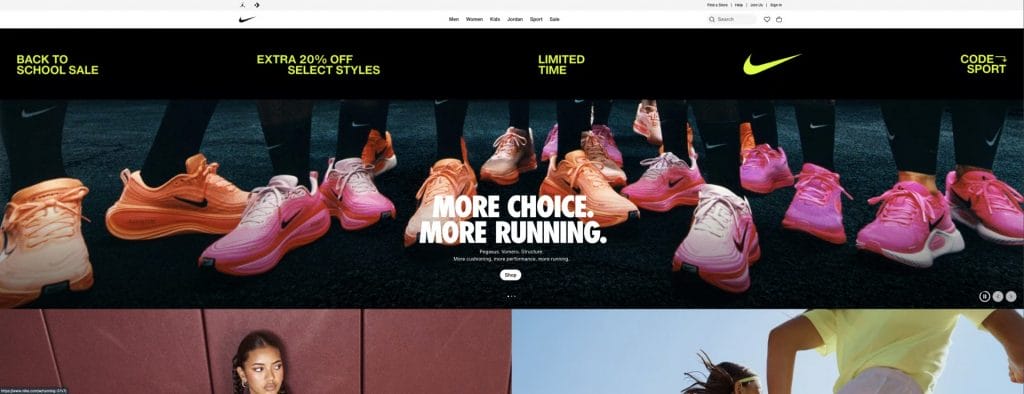
Best Practices:
- Combine brand, performance and customer retention data in one reporting dashboard
- Maintain a baseline brand-building budget even when focusing heavily on short-term performance campaigns
- Test marketing creative to ensure your brand identity is consistently reinforced throughout the customer journey
Brand Image Development Process
Creating and maintaining a strong corporate brand image requires a repeatable process:
- Define Brand Identity: Clarify your values, tone and positioning
- Research Audience Perception: Identify how customers currently see you through surveys and sentiment analysis
- Close the Gap: Align messaging, product quality and service delivery with the desired perception
- Execute Consistently: Apply visual, verbal and experiential guidelines across all channels
- Monitor & Refine: Adjust based on perception metrics and market shifts
For big brands, this process scales with governance councils, cross-departmental KPIs and localized execution plans, ensuring every touchpoint reinforces the same core brand promise.
How To Measure Brand Image
Measuring brand image means linking perception to performance.
Here’s a simple framework:
- Customer Surveys: Track metrics like Net Promoter Score (NPS), brand recall and brand sentiment
- Online Sentiment Analysis: Monitor social media mentions, reviews and discussion boards for recurring themes
- Repeat Purchase Rate: Loyal customers signal strong brand affinity
- Pricing Power: Measure the gap between full-price sales vs. discounted sales
- Share of Voice: Compare your brand’s visibility in media and search against competitors
Brand Image Strategy For National Companies
National companies face the unique challenge of delivering a consistent brand experience across diverse regions, cultures, and customer expectations.
A successful strategy blends:
- Centralized Brand Governance: One set of rules for tone, values and visuals
- Local Market Adaptation: Adjust content, promotions and experiences to match regional tastes.
- Scalable Personalization: Use data to keep relevance high without diluting the brand.
National brands that manage this balance, like Delta or Costco, maintain trust, loyalty and pricing power across the country.
Where Brand Image Is Evolving In 2025
While the above reasons explain why brand image matters, here’s where it’s expanding:
- Heightened personalization demand: McKinsey’s 2023 research shows that personalization leaders can reduce acquisition costs by up to 50%, grow revenue by 5 – 15% and boost marketing ROI by 10 – 30%. In 2025, customers expect this relevance at every touchpoint, whether it’s an email, checkout flow or in-app recommendation.
- Experience as cultural currency: Features and price still matter, but loyalty increasingly comes from emotionally resonant, purpose-led experiences. Brands that connect to cultural moments and shared values earn deeper advocacy, especially among Gen Z and younger millennials.
- AI-driven brand stewardship: With generative AI shaping copy, visuals and even customer support scripts, brand image now hinges on AI governance. Maintaining clear guidelines around tone, voice and values is crucial to ensure that machine-generated content supports rather than undermines the brand’s reputation.
Brand Image Vs. Brand Identity: Why Both Matter
Customers are now more discerning than ever.
They don’t just care about what your brand looks like, but rather what it feels like.
That “in-the-moment trust” isn’t engineered through logos. Instead, it comes from how well your brand’s identity (how you position yourself) aligns with your image (how people actually perceive you).
Brand identity includes elements such as logo, tone, values and messaging and it’s entirely company-controlled.
On the other hand, brand image is all about how customers perceive your brand. It’s shaped by customer experience, reputation, storytelling and social proof perception.
When your brand identity and brand image don’t align, marketing investments can erode rather than increase brand equity.
Brands that track and nurture both their identity and image build loyalty, sustain premium pricing and stay resilient amid challenges.
| CONCEPT | BRAND IDENTITY | BRAND IMAGE |
| Control | Fully controlled by the company | Formed by consumer perception |
| Manifestation | Visuals, messaging, values, tone | Reputation, emotional associations, trust |
| Role | Defines aspiration & positioning | Reflects lived experience & reality |
Consider Apple: its brand identity, characterized by minimalist design and premium messaging, resonates globally.
This aligns seamlessly with its brand image, where consumers perceive Apple as innovative, trustworthy and aspirational, powering loyalty and the ability to command premium pricing.
Even rival-competitive markets with similar specs can’t match Apple’s centered brand image.
Partner With Digital Silk To Create Your Brand Strategy
In 2025, brand image is how your strategy feels to customers, candidates, partners and investors, every day, in every channel.
Digital Silk is a top-rated branding agency specializing in creating and maintaining brand consistency across all channels. We help businesses connect with their target audience through results-driven strategies and solutions.
Other services we offer include:
- Brand identity
- Digital marketing
- Social media marketing
- Rebranding services
- B2B branding
- Logo design
Contact our team, call us at (800) 206-9413 or use the Request a Quote form below to schedule a consultation.
"*" indicates required fields


